All about dogs: types, selection, content and interesting facts

The dog is one of the most popular pets in the world. Animals are distinguished by a high level of intelligence, good learning ability and social behavior. Not every dog breeder has complete information about the characteristics of this animal. Everything about dogs, namely the types, subtleties of choice and content, as well as interesting facts about them will be discussed in more detail in this article.
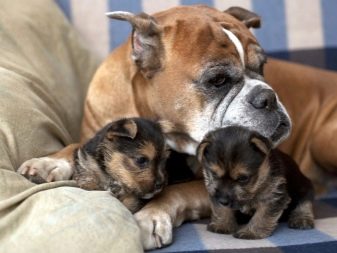

History of origin and domestication
The first mention of dogs as a separate species dates back to 1758. In 1993, the classification was adjusted and it was decided to bring the animals into the subspecies of the wolf. There are several theories about the origin of dogs.
The most common versions say that they descended from wolves or jackals.
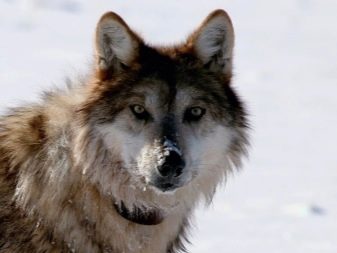

Scientists also disagree on whether the dogs originated from the crossing of two closely related groups of animals, or from the same species. The relationship between dogs and wolves has been proven through research. It is believed that it was the dogs that became the very first domesticated animals.
At the moment there is no reliable information and the exact date of the appearance of the dogs. However, all scientists agreed that animals managed to be tamed back in the ancient world. A general idea of the origin was obtained from ancient rock paintings and other archaeological finds.
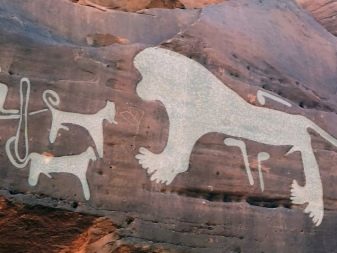
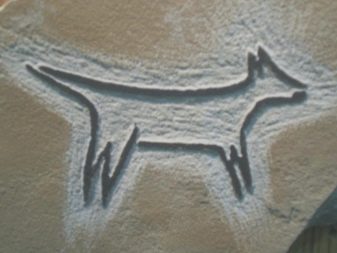
In the northeastern territories, dogs were present in human life already in the Mesolithic era. According to scientists, dogs were the only pets during this period. Individuals that existed in this historical era were distinguished by a powerful jaw and impressive dimensions.
Archaeological finds have provided some insight into the role of animals in human life between the Paleolithic and Neolithic. First of all, dogs were used for hunting. According to the marks on the bones found, scientists suggest that the animals were butchered to use the bone and skin for making various things. Dog meat was most likely eaten.
Studying genetics
Genetic research has led to several versions of the emergence and domestication of dogs. Thanks to scientists from the University of California, it was discovered that all dogs have one common ancestor, which, in turn, descended from wolves as a result of evolutionary development about 135,000 years ago.
As a result of DNA analysis of representatives of various breeds, scientists from Sweden came to the conclusion that first tamed animals in China about 16,300 years ago. American scientist Robert Wayne believes that this event was 40,000 years ago.
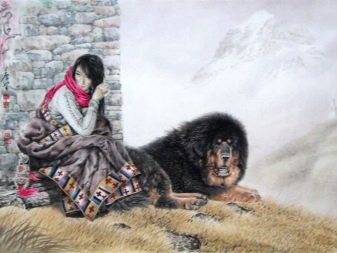

In contrast, research by biologists from the University of Turku (Finland) suggests that the first dogs appeared in Europe. The domestication of animals took place no more than 32,100 years ago. As for information about older dogs, it is most likely that these individuals were wolves that they tried to tame. The latest research was carried out in 2015 by American and Swedish scientists. They again suggested that dogs appeared in Asia about 33,000 years ago.
Major versions of taming
There are several versions of the domestication of the ancestors of dogs. According to the first version, the wolves themselves acted as the initiator of establishing relationships with humans and nailed to people. Another version says that domestication happened solely due to the initiative and actions of a person. There is a possibility that the ancestors of modern dogs did not appear in any particular region, but in several places at once at different time periods.
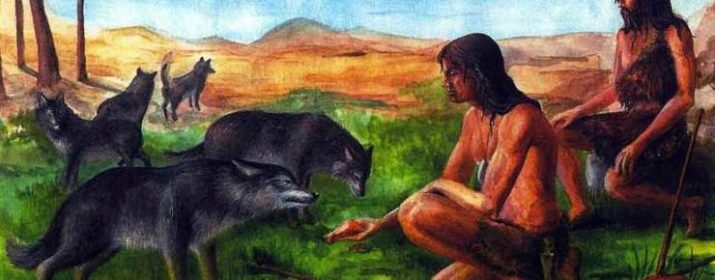
If we consider the version of the "self-domestication" of wolves, then scientists suggest that this could happen if weak individuals were expelled from the pack.
It was difficult for the animals to feed themselves on their own, they were forced to move closer to people.
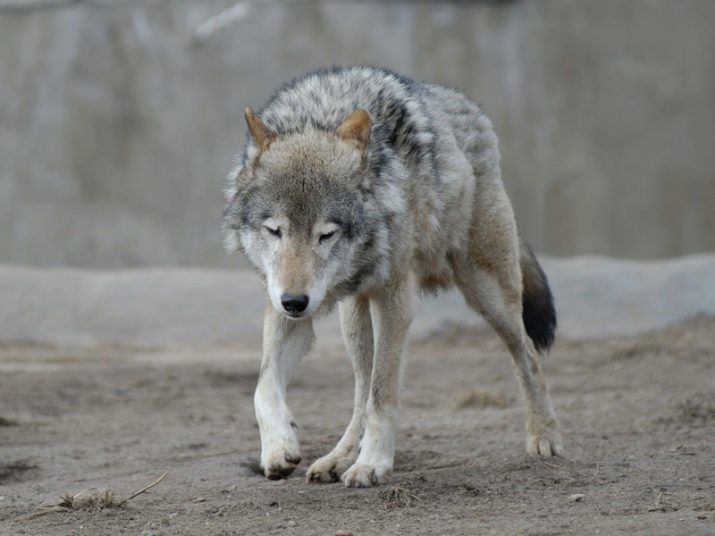
As for the role of the dog in the life of primitive man, the main version is the use of animals as an assistant in hunting. Also, dogs could be used to protect the territory. However, their main task was to help in obtaining food.
Dog breeding became most relevant when the first social groups began to form. People began to develop more and more territories and settle down on them. The dogs became assistants in housekeeping and learned to graze the herd, and also helped to hunt and acted as a guard of the home.
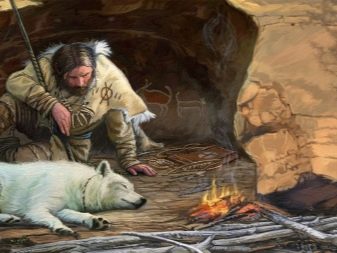

Description
Today there are a large number of different breeds of dogs. They differ from each other in both character and exterior. To assess the various criteria of animals, such a concept as a design was singled out. The term includes a combination of several characteristics at once, such as physical development, health and fertility. The classification by type of structure is as follows:
- dry;
- loose;
- strong;
- gentle;
- rude.
It is believed that this classification is not always suitable for an accurate description of representatives of a particular breed. Dogs are often found between two different types of designs.
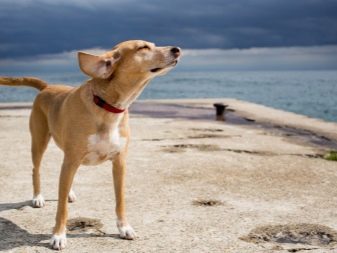

Torso and limbs
The parameters of animals depend not only on the breed, but also on individual physiological characteristics.Among the record holders in weight and height, representatives of the Great Dane and English Mastiff breeds can be distinguished. Among Great Danes, a record height of 109 cm was recorded with a mass of 111 kg and a body length of 221 cm.The Mastiff's record was 155.6 kg with a height of 94 cm.
It is customary to determine the height of dogs by the withers. The withers are a convex area between the shoulder blades. This area is the highest point of the back. Back, in turn, it is customary to call the area from the withers to the waist.
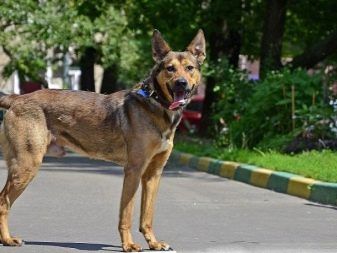
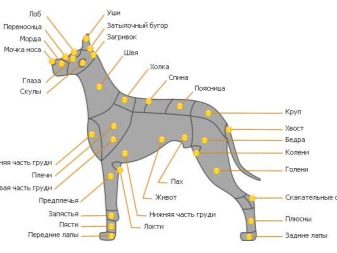
In a healthy and developed dog, the back should be strong, straight and wide enough.
The lumbar region should also be well muscled, broad and short. The loin should not sag or be too flat or overly arched. A small bump in this area is the norm.
The rear upper part of the animal's body is called the "croup". The pelvic bones are located in this area. A wide, strong and short croup provides good stability for the hind legs. The back of the body can tilt slightly towards the tail, the main thing is that this transition is smooth.
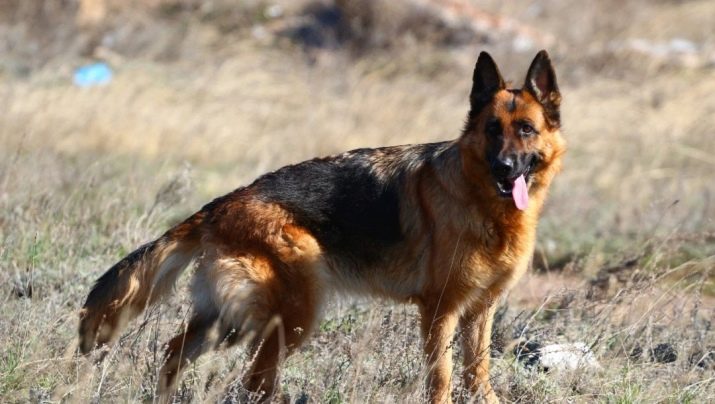
The thoracic region in animals should also be well developed. The normal shape of the chest is an oval, which has a blunt upper edge and a pointed bottom. The line of the abdomen should be located above the line of the thoracic region.

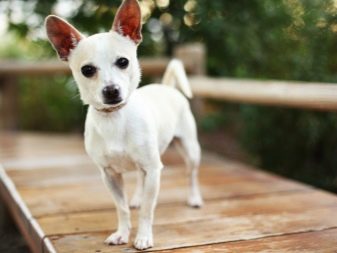
As for the tail of animals, it can have different shapes and sizes. In this case, the norms and deviations depend on the standards of the breed in question. In size, the tail can be either short or long. In the first case, it will be above the hock joints, and in the second, lower.

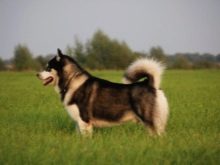
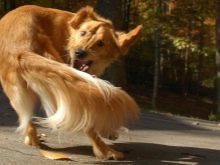
By position, the tails can be raised and lowered. In some breeds, the tail must be docked according to the standard. This part of the body is necessary for animals to coordinate movements. Dogs also use their tail when communicating with humans and other animals.
The limbs of the dogs are necessary for movement, and also support the entire body. Depending on the breed, the size of the legs and the structure of the paws may have their own characteristics. Each species on all paws has four supporting fingers with claws that do not retract inward.
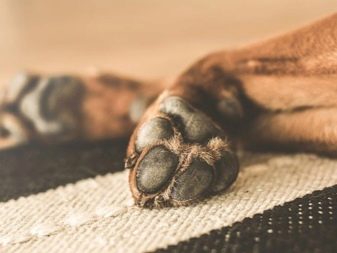
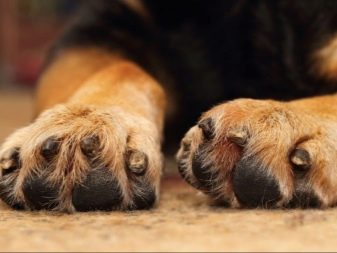
There is also a fifth toe on the forelimbs, which can be located at different levels. In some breeds, it is quite high and practically invisible.
Some types of dogs have an extra toe or even two toes on their hind legs.
Head
The shape and size of the dog's head is directly dependent on the pet's belonging to a particular breed. It can be short, elongated, or in precise proportions to the body. As for the shape and volume, there are heavy heads, rough with sharp lines, as well as light ones with smooth transitions.



Ears vary from breed to breed in size, shape and position. Their size is usually determined in relation to the dimensions of the head. Distinguish between large and small ears, short and long. The following types of canine ears are also distinguished:
- hanging;
- half-hanging;
- standing.

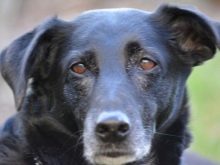
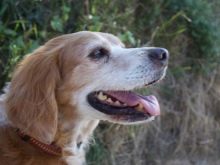
The total number of teeth in an adult healthy dog should be 42. There are 20 teeth on the upper jaw, and 22 teeth on the lower one.
Also, animals can have a different bite shape.
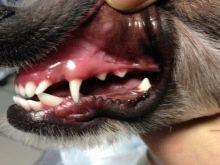
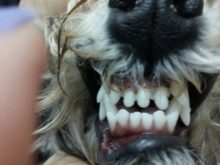
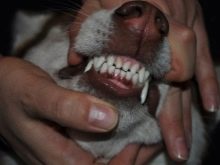
Wool
The woolen cover performs a protective function against adverse environmental influences. It is also needed to maintain optimal body temperature. The hair coat consists of undercoat and wool. Some breeds may not have an undercoat - in this case, we are talking about short-haired species.
The structure of hairs in representatives of different breeds also has its own characteristics. The coat may curl slightly, be curly or curled, and vary in texture. Also, each breed has its own standard for hair color and its possible options.
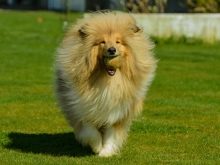
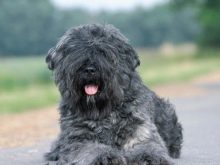
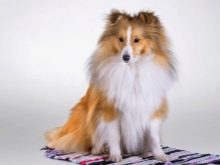
Sense organs
Like humans, dogs have 5 senses. Dogs are different excellent sense of smell, which is much better developed than that of humans. The acuity of scent largely depends on the breed and the individual characteristics of the organism. Dogs' sensitivity can be improved with regular exercise.
Hearing in animals is also much better than in humans. Dogs are capable of receiving ultrasonic signals up to 40 kHz. Vision of dogs also has its own characteristics.

Due to the special structure of the eyes, they cannot distinguish all colors as well as a person. For example, red and orange shades are difficult for them to fully perceive.
But dogs are excellent at distinguishing shades of gray, and they need less light to determine the shape and position of an object. That's why animals see and navigate in the dark much better than humans. Another distinctive feature of dogs' vision is that each of their eyes perceives information separately. Already the brain combines two pictures into one and gives the animal a complete picture of the environment.
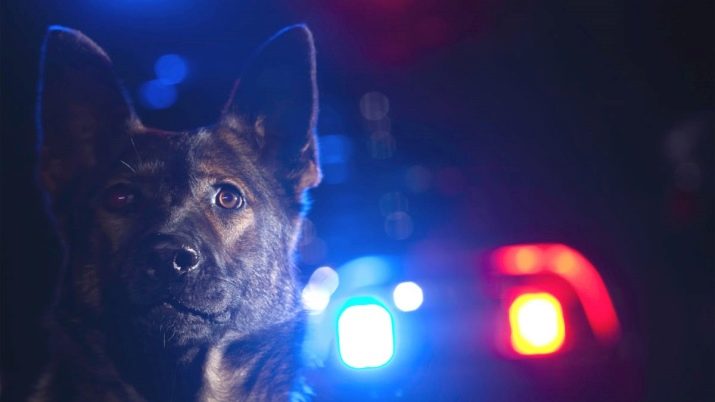
The sense of touch in dogs is excellently developed, and they are able to feel the slightest touch on the hairline. Also, animals instantly react to temperature changes. With regard to the perception of tastes, it is believed that in this case, humans are superior to dogs. Although dogs can distinguish between sweet, salty, bitter and sour, they have fewer taste buds than humans.
Life span
The life expectancy of a particular individual is greatly influenced by the general state of health, breed, proper nutrition, as well as the peculiarities of its maintenance. Some breeds have a rather long life span, which is about 20 years. In other species, this indicator can be much lower. For example, German Shepherds and Boxers live for about 13 years.
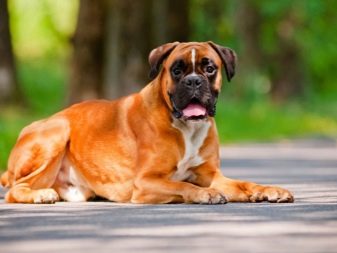
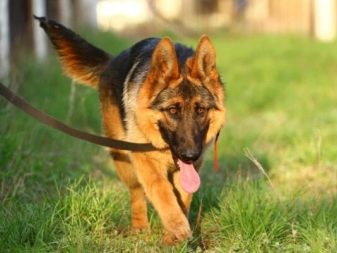
Puppies grow up pretty quickly and become independent. Dogs reach their peak of development by the age of 5, after which the body begins to gradually age. The pet gradually loses its activity and it may develop health problems.
Adults need extra care. To extend the life of your pet, you need to create comfortable living conditions for him, follow the rules of feeding, and also do not forget about visits to the veterinarian, vaccination and treatment against parasites.

Regular observation by a doctor will allow you to detect health problems in time and prevent the development of any diseases.
Should you start?
It is impossible to give a definite answer to the question of whether to have a dog. Animals have their own advantages and disadvantages both in general terms and in each breed in particular. It is also worth noting that each individual is individual and has its own character and habits. In addition, some people may simply prefer other pets, or the dogs may not suit a particular person according to other criteria.
Before making the final decision on buying a dog, it is necessary to carefully study all the features of this animal and the nuances of its content. First of all, you need to take into account the fact that the pet will take quite a lot of time. For full development and well-being the dog needs to be in frequent contact with its owner and with other individuals of its species.
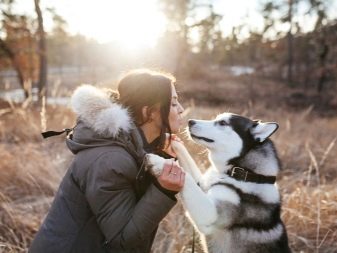
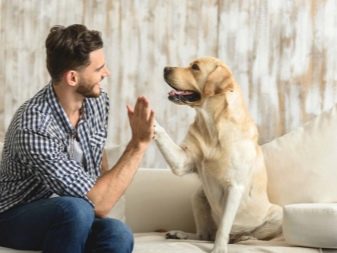
It is not recommended to leave your pet alone in the house for many hours every day., and at the modern pace of life, this is almost impossible. Even if the animal will patiently wait for the owner from work, this does not mean that he is comfortable living in such conditions.
In a sad state or in stressful situations, your pet may begin to behave in undesirable ways - for example, ruining things or not observing hygiene.

For this reason it is not recommended to have such a pet for those people who, for one reason or another, are not able to devote enough time to it and often disappear at work. Any dog needs educational activities and training. Otherwise, the animal can grow up disobedient and it will be quite difficult to live with him.
It will take a lot of patience and perseverance from the owner for the training process to give positive results. If you handle an animal improperly, you can harm its psyche, so it is better not to have such a pet for hot-tempered people. It is worth being prepared for the fact that dogs will have to constantly allocate certain funds from the budget.
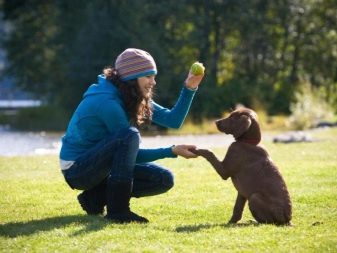
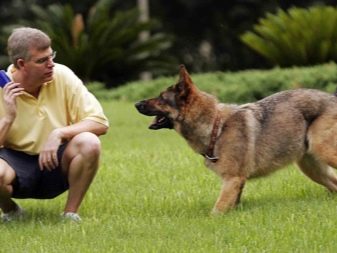
The pet needs in proper nutrition with high-quality feed, regular care and vaccination. In addition, you will need a lot of different little things to keep your pet, for example, bowls, toys, a leash, and so on. In order for a pet to grow up healthy, it must be periodically monitored by a veterinarian.
Before making a final decision, it is necessary to consider not only the possible difficulties of keeping a dog, but also the benefits of having such a companion. First of all, having a pet teaches you to take responsibility and care.
Dogs are very attached to their owner and are willing to show their love all the time.
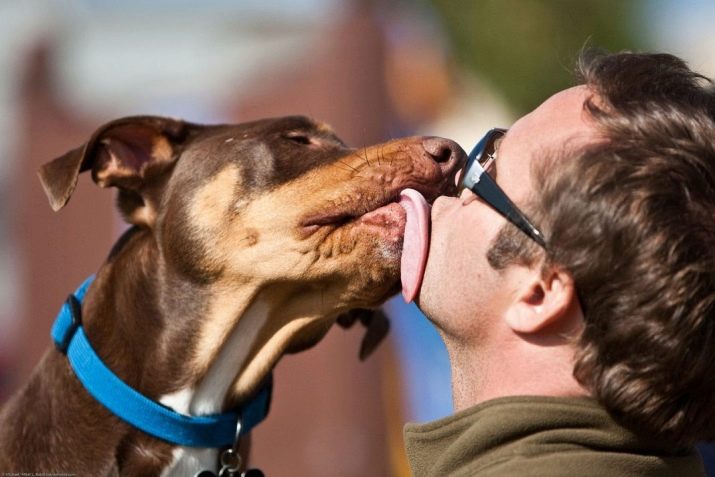
Contact with your pet will have a positive effect on mood in general, and regular walks in the fresh air will also improve your health. Some dog breeds are useful for humans from a practical point of view. For example, a pet can be an excellent watchdog or hunting assistant.
How do you help a person?
Often a dog for a person is not only a friend, but also an assistant in various matters. Service dogs are widely used in search, guard and other activities. Due to their excellent sense of smell, they are often used to search for missing people and any object, as well as in the service to fight criminals. In addition, dogs can rescue people in extreme situations, for example, pull them out of the water or from under the rubble.
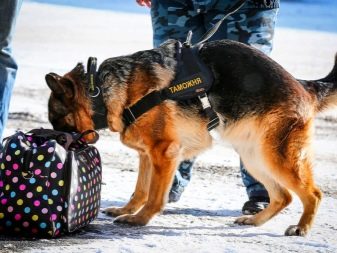
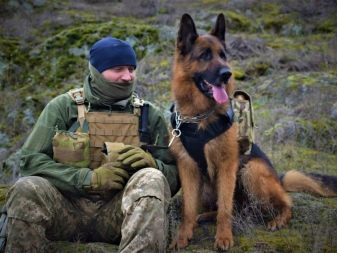
The dog can become an indispensable help for farmers. Shepherd breeds do an excellent job of looking after the herd. Trained dogs can be excellent hunters or watchmen. Some species can babysit and look after young children or the elderly.
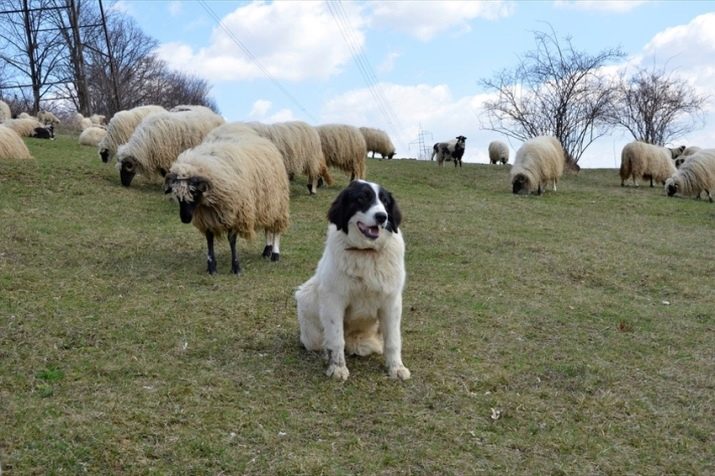
It should be noted separately guide dogs, which make life much easier for blind people. It is believed that animals also have a positive effect on human health.
Regular interaction with your pet reduces stress levels and also improves cardiovascular function.
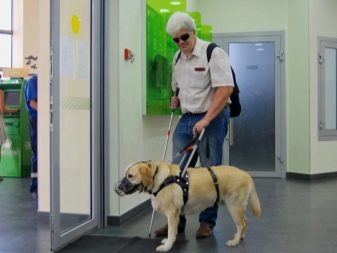
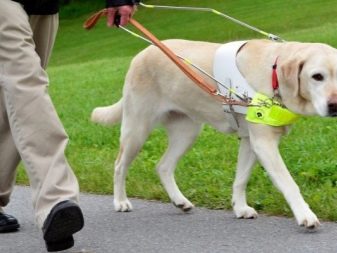
What are they afraid of?
Like all living things, dogs have a sense of fear. No matter how big and formidable the dog is, certain things will still scare him, and in no case should the animal's feelings be disdained. Each individual may have their own fears and, if possible, the pet should be protected from stressful situations.
Canines have very good hearing and can therefore react violently to harsh and loud sounds. Some individuals relate to sound stimuli more calmly, but in any case, it is undesirable to slam the door loudly with your pet, start fireworks or blow up firecrackers.

With the wrong upbringing, the dog may never socialize, which will lead to a number of problems. One of them is increased anxiety and fear... Such individuals will be afraid of both people and animals.
Some individuals may have a so-called learned fear. Most often, it appears if the animal has been physically abused and is now afraid of a repetition of a similar situation. For example, if a dog was beaten with a stick, then he will be afraid or, on the contrary, show aggression at the sight of a person with a club in his hand. If the pet was offended by children, then he will be wary and negative about this age group.
Features of behavior and psychology
Dogs are able to perfectly interact with humans and other animals. It should be remembered that each individual will have its own set of individual qualities. Behavioral characteristics and character depends on heredity and upbringing. All dogs have an innate ability to analyze the gestures and voice of a person and thus determine his intentions.
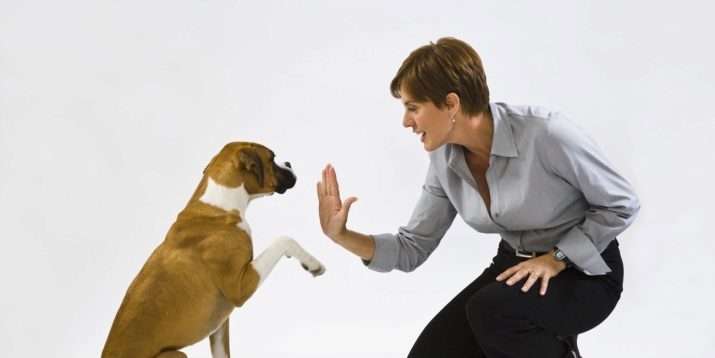
The intelligence level of animals is quite high. Studies have shown that they do an excellent job with intellectual tasks. It is believed that the intelligence of different breeds will differ. The intelligence and development are influenced by the individual characteristics of the individual, the correctness of training and training, as well as the acquired life experience.
Experiments have shown that dogs are able to memorize and understand the meanings of many words.
Dogs can study the properties of various objects, as well as group them by shape. Dogs use vocalization to communicate with humans and other animals.
The sounds that dogs make are similar to the vocal cues of wolves. For the most part, the difference is that dogs are less likely to howl, and instead mostly use barking. The volume and other characteristics of the emitted signals can be used to determine the mood of the animal.

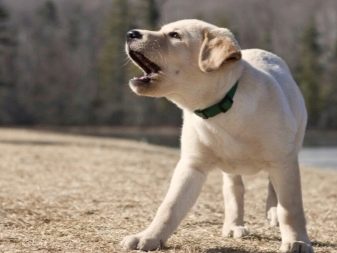
A pet can bark in a variety of situations, whether it is a joyful meeting with the owner or a manifestation of aggression towards a stranger. An angry dog has a much lower pitch of sounds than an animal that displays positive emotions. Howls in canines are longer in time, and such a signal is mainly used to maintain communication with other individuals.
Squealing in dogs is a high frequency sound that signals that the animal is in pain or fear. Growling is nothing more than a threatening signal. Dogs whine, first of all, in order to attract attention to themselves, so that a person can help them cope with this or that problem.
Dogs are considered the most social of all types of pets. They willingly come into contact with both humans and other animals. To communicate, dogs use sound signals, as well as sign language and facial expressions.
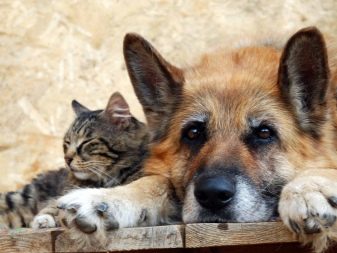
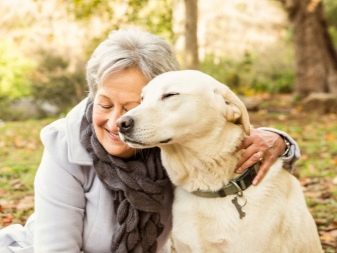
Popular breeds
Today there are more than 400 different breeds of dogs. Among them there are both popular and very rare species. By size, all breeds can be roughly divided into small, medium and large.
Chihuahuas are undoubtedly in the top of the best small dogs. Such animals are distinguished by the smallest dimensions, bulging eyes and protruding ears. The coat can be either short or long. Body weight varies from 500 g to 3 kg.

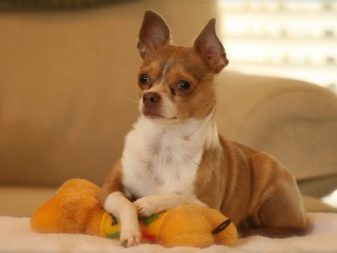
Chihuahua is perfect for young children, as well as for the elderly.
Representatives of this breed are distinguished by their activity and natural curiosity. Aggression in individuals should be completely absent, since this quality is considered a deviation from the standard of the species.
One of the popular medium breeds is Siberian Husky. Dogs have earned popularity due to their attractive appearance and kind disposition. Individuals with blue eyes look especially impressive. Initially, they were used exclusively as sleds.
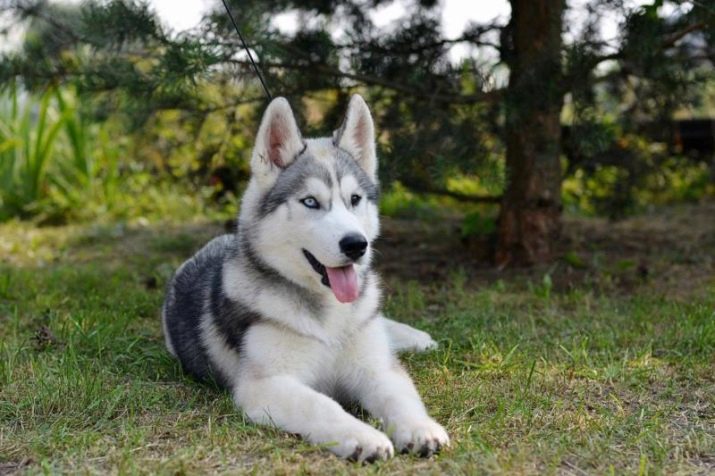
Such animals are very active and, in conditions of keeping in an apartment, need regular and long walks. With insufficient physical activity, the pet may begin to behave in a bad way: damage property or even run away. Due to their friendly nature, huskies are not suitable for the role of a hunter or guard.
Representatives of large breeds are best suited for keeping in a private home, as they require a lot of space. Recently gaining more and more popularity Central Asian Shepherd Dogs, or Alabai. The growth of an adult animal at the withers can reach 70 cm, and the body weight - 50 kg. The body of the dogs is powerful and muscular.
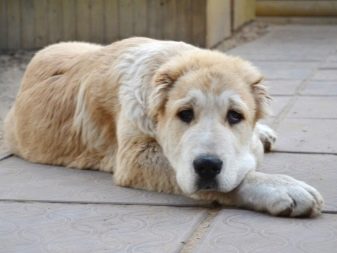
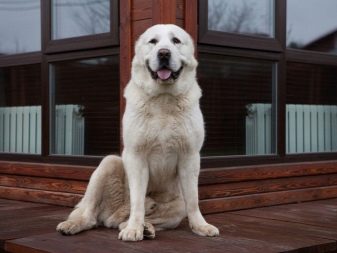
These dogs are good guards and protectors.To develop their working qualities, it is necessary to take a responsible approach to education and training. Alabai are also distinguished by their calmness and balance, and therefore they will not attack a person just like that.
How to choose a dog?
Before buying a puppy, you first need to decide on the breed. It is necessary to start not only from personal sympathy for the appearance or some other characteristics of the dog, but also from considerations of practicality. Some breeds are better suited for a private house, and some for keeping in an apartment.
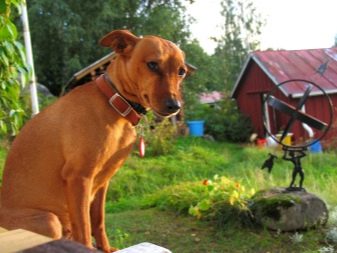
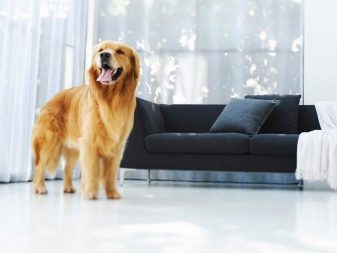
There are family companion dogs that will get along great with all family members. It will not be scary to leave them alone with small children.
Depending on the functions of the dogs, one can distinguish hunting breeds, guard and shepherd breeds. It is also important to evaluate the financial aspect, since the cost of different breeds can vary greatly.
Also, each type has its own nuances in the maintenance and care, which must also be taken into account. When it was possible to decide on a specific breed, it is recommended to study the information about where and how to choose the right puppy for yourself. It is best to purchase an animal from professional breeders and with documents. This will reduce the risk of marriage or deception..
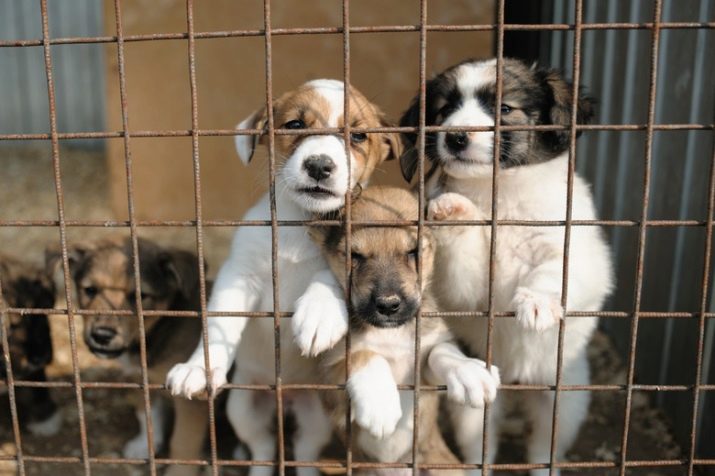
Content basics
The nuances of keeping a dog depend primarily on the breed. Some species are intended exclusively for living in apartments, while others are better kept in enclosures. In any case, each pet will need its own place, regular walks and proper feeding.

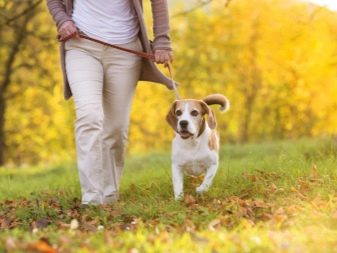
Before the appearance of the animal in the house it is recommended to purchase all the necessary items for its maintenance, for example: bowls, collars and, if necessary, a muzzle, toys, bedding and so on. It is also recommended to immediately buy special tools and care products: lotions and shampoos, combers and nail clippers. To the appearance of the puppy in the house it is worth taking with full responsibility, developing a diet and walking regimen for him, as well as preparing food in advance.
Proper nutrition
The basis of proper nutrition for a dog of any breed and age is a balanced diet. The pet must daily receive the necessary trace elements and vitamins. The amount of food is calculated individually for each individual. It depends on the size, age and lifestyle of the pet.
Ready-to-use packs usually have ready-made portion calculations and feeding recommendations.
However, not all owners feed their pets exclusively with store-bought food, but they also provide natural products.
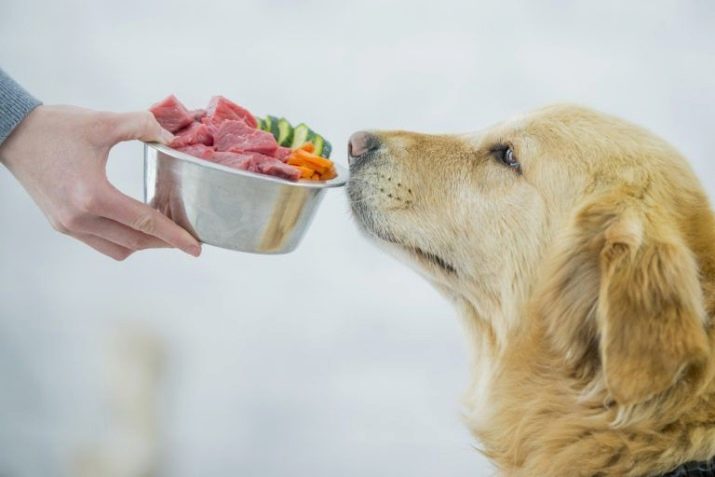
With a natural diet, meat products should make up the majority of the diet, namely 2/3. The remaining 1/3 is plant-based food. As for the specific volumes, for an adult, the amount of natural food per day should be 4% of the body weight. For puppies, this rate can be no more than 6%.
As for the frequency of feeding, it also depends on the age of the individual. Small puppies can be fed up to 6 times a day. After 3 months, the number of doses should be gradually reduced. First, up to 3-4 times a day, and after six months, switch to two meals a day.
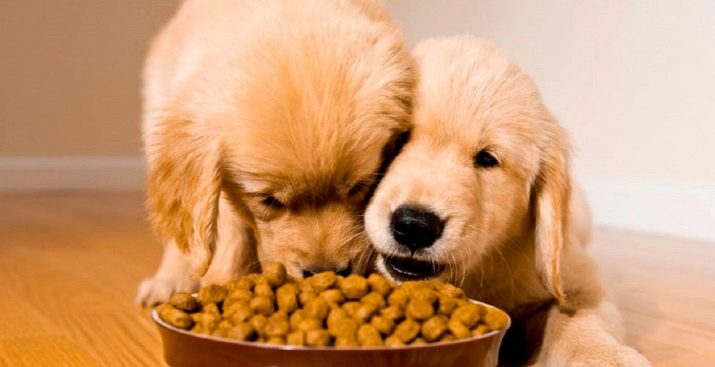
It is advisable to give food to the animal at the same time. There is no need to leave bowls of food freely available for the whole day, and uneaten food should be thrown away immediately. During the day, the dog can drink a lot, especially during the hot season. Pet should have access to clean and fresh water at all times.
When drawing up a menu for a pet, you need to study the information about the necessary and prohibited products. First of all, dogs need protein foods. However, it should be borne in mind that pet meat should be lean, such as beef and horse meat.
Meat products can be pre-boiled or given fresh, but only after freezing and defrosting. In addition to meat, you can include offal in the diet.Fillets of sea fish and seafood are given no more than once a week.
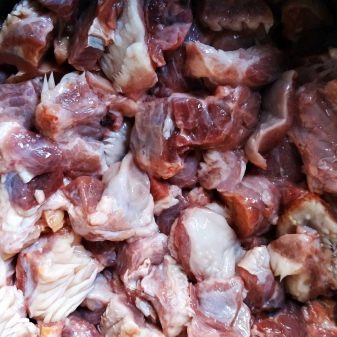
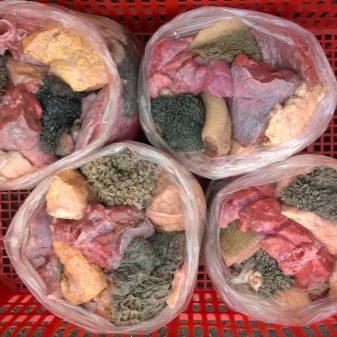
In addition to meat, dogs should be given plant foods. It can be cereals from various cereals, as well as some vegetables and fruits. If most dogs like fruits because of their sweet taste, then not every individual wants vegetables. Therefore, vegetables should be finely chopped and added to meat or porridge.
Animals can be given some eggs and dairy products no more than a couple of times a week. Pure milk can be consumed only by small puppies, but adults are simply not able to digest it.
To improve digestion, you can give animals bran or dried pieces of brown bread.

Many dogs love to beg for food, but do not indulge your pet and feed him food from the table. A large amount of food familiar to humans can harm the animal. Chocolate and other sweets, fatty foods, baked goods, mushrooms and some fruits can be dangerous for dogs.
Care
The complexity of caring for a pet will depend largely on what breed it belongs to. Common measures for all dogs are timely vaccination and treatment for helminths and skin parasites. Also, animals need hair care, which consists in washing and combing. Some breeds require occasional hair clipping.
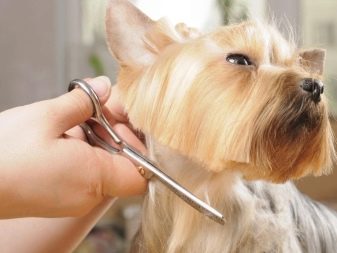

Dogs' teeth, eyes and ears need regular examination and sometimes special treatment. To prevent the formation of plaque on the enamel and the formation of tartar, your pet needs to brush its teeth or buy special bones for cleaning the oral cavity. As for the eyes, it is necessary to wipe them with a special lotion in case of contamination.
Breeds with long bangs need regular eyeball treatment.
With the auricles, the situation will be identical: periodic inspection and cleaning as it gets dirty. However, dogs with floppy ears are advised to treat at least once a week. It is also necessary to regularly trim your pet's nails.

Education and training
Raising a dog is of the utmost importance. It is necessary to train the animal from an early age. This process should be taken very seriously, as the result of mistakes made can be mental and behavioral problems of the pet.
Some of the nuances of upbringing will depend on the breed and character traits of an individual. This should always be taken into account during training and, if possible, seek an individual approach to each individual pet.
It is necessary to start training as early as possible.

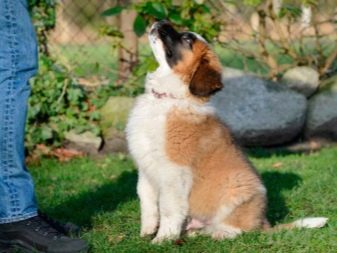
Immediately after the appearance of the puppy in the house, he should be accustomed to the nickname, as well as show who is the leader in the house. The dog will perceive its new family as a pack, and if the owner cannot defend his leadership, then the animal will take over this function. This is fraught, first of all, with the fact that the pet will become naughty and, possibly, even aggressive.
At first, you need to spend as much time as possible with the dog so that it gets used to the owner faster. In addition to the nickname, the dog in the first months of life must master the simplest commands, such as "Place", "To me" and "Fu". During training, to consolidate the result, with the correct execution of the command, a piece of the pet's favorite treat is used.
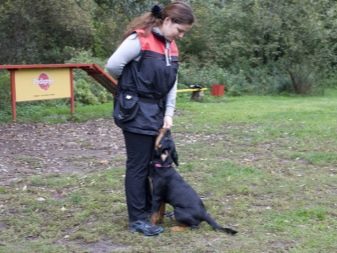
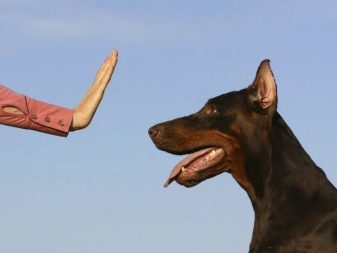
As for punishments, it is allowed to slightly raise your voice or slap the animal on the rump. The main thing is not to overdo it with the force of the blow and with shouts, otherwise you can greatly scare the dog and make it timid and fearful. The basis of training an individual of any age is perseverance and patience.
How to calculate how old a dog is?
There is a tendency to translate canine age into human age. Most often, the results of such calculations are far from reality. One of the most popular ways to do this is to multiply the age of the animal by 7.
Such a translation into human years is incorrect. It is more correct to use special tables when calculating, where certain coefficients are indicated for each dog's age, by which multiplication must be performed in order to bring the years of animals in line with human ones. For example, a dog year can be equated to 14 or 16 human years. In the second year of life, the pet "reaches" its 24th birthday. Then the rate of maturation slows down a little.
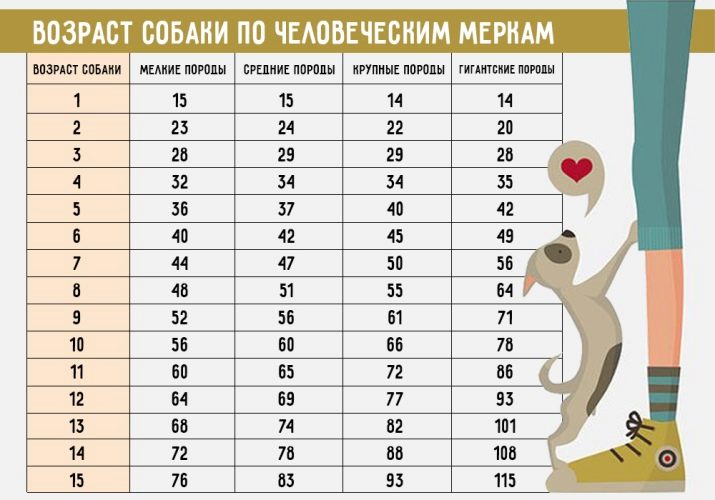
It is believed that representatives of large breeds age faster. When further recalculating the dog's age to the human age, the following scheme can be used: each year of small individuals is equal to 5 years of a person, in large dogs - to 6 and in giant dogs to 7. An animal that has reached the age of 16 can be considered 89 years old by human standards ...
The owner does not always have information about the age of his pet, since the latter can get into the house no longer as a puppy or from the street. Information about a dog's age is essential for developing the correct diet, grooming, breeding and vaccination.
There are several ways to determine this parameter, one of which is to assess the condition of the teeth.
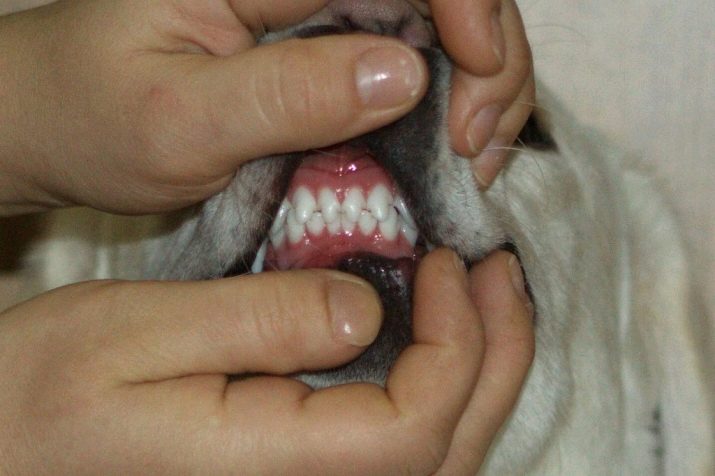
An experienced veterinarian can easily determine the age by the teeth of a dog. This method can be used independently, based on the following basic data.
- Teeth change in dogs occurs once in a lifetime. As accurately as possible, you can determine the age of an animal only if it is healthy and does not have jaw deformities.
- If the puppy has no teeth at all, then this indicates that he was recently born. Such an animal cannot be more than 20 days old. The first canine teeth usually begin to erupt about the third week after birth.
- The presence of deciduous molars in a puppy indicates that he has already reached one month of age. All puppies' teeth grow in about the second month.
- Teeth usually begin to change in the second month. The incisors are replaced first. New canines grow back after 5 months. Complete replacement of milk teeth is completed by the year.
- At one year old, a dog's teeth are very white and bumpy, which will wear off as they grow older.
- In the second year of life in dogs, the bumps on the hooks that are on the lower jaw are erased.
- At 4 years of age, dogs' teeth lose their original shine and become dull. The tubercles on the toes of the upper jaw disappear.
- At 5 years old, yellowing of the enamel is usually observed. Fangs can begin to dull, and bumps disappear on them.
- In the sixth year, the teeth turn yellow even more, and the bite begins to seem irregular, as the incisors become concave.
- After 8 years, the condition of the teeth deteriorates even more. In many individuals, the appearance of strong plaque and tartar can be observed. Canine teeth become even shorter and dumber.
- After 10 years, you can observe the absence of some teeth, as well as the presence of caries.
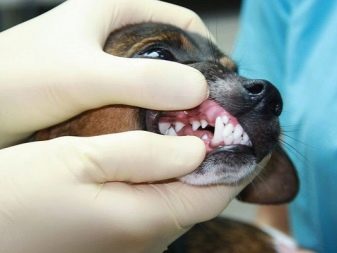
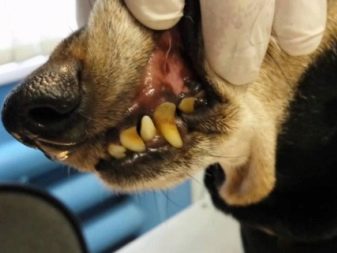
When determining the age of an animal, one can rely not only on the assessment of its teeth. It is also recommended to pay attention to muscle development and behavioral characteristics. Young, healthy individuals have stronger muscles and are in motion most of the time. Adult animals become flabby and prefer to sleep more than move.
Calluses can be found on the elbows of older dogs. Also, with age, the condition of the coat deteriorates in dogs: it becomes harder and quickly becomes dirty. Older, dark-colored dogs may have gray hairs around the muzzle.

Frequent problems
In addition to positive emotions, dogs can cause certain problems. However, with the right approach, any difficulties can be easily prevented or eliminated. The main problem is considered lack of time for personal affairs, as the pet requires a lot of attention.
The owner needs to learn to plan his life in advance. For example, when going on vacation, you need to take care of where and with whom to leave your pet. To properly care for your pet, you need to know as much as possible about its physiological characteristics.
Dogs feel bad in hot weather. In the heat, they behave differently: they become lethargic, try to find a cool place and lose their appetite. To help your pet, you can place it in the bathtub and dampen the coat with cool water. Also, in hot weather, it is allowed to change the mode of walking and feeding.
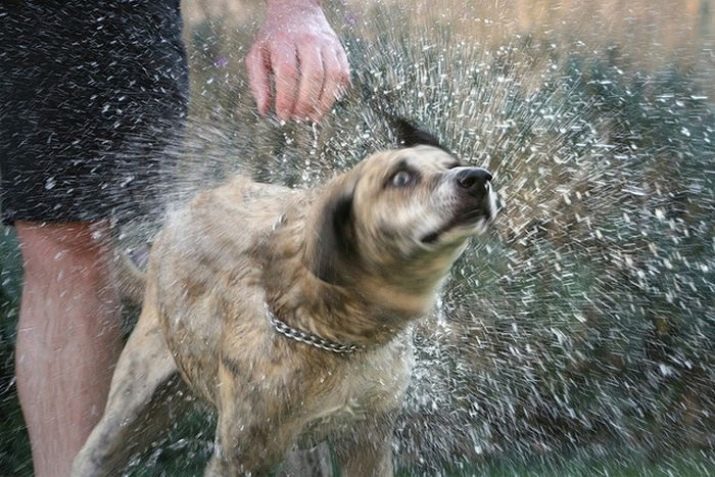
Danger to humans
Unfortunately, a dog is not always a friend of a person. In certain cases, animals can be extremely dangerous to human health and life. The main threat is the excessive aggressiveness of certain individuals. It is believed that the level of aggression is influenced by the breed of the animal.
However, the main reason for deviant behavior is most often flaws in upbringing or cruelty to an animal. Contrary to popular belief that large breeds are the most dangerous, statistics show that small dogs attack people and other animals at least as often.
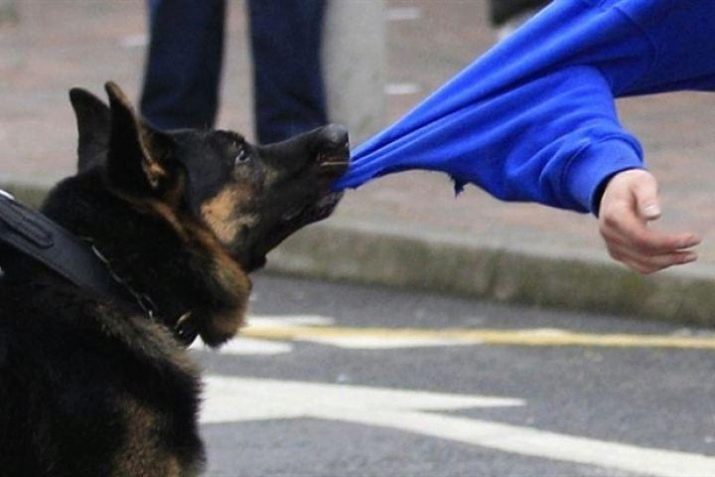
The danger is not always associated with aggressive behavior of animals. Peaceful pets can also harm their owner. The fact is that some infectious diseases of dogs can be transmitted to humans. That's why It is very important to closely monitor the health of your pet.
Interesting Facts
Even the most experienced dog breeders often do not have all the information about dogs. There are many interesting facts about animals. For example, not everyone is aware that dogs can understand the specific meanings of words, and their intelligence corresponds to the developmental level of 3-year-old children.
Dogs do not like strong odors that irritate the nasal mucosa. For example, the aroma of pepper or chemical compounds such as varnishes and paints will not affect the well-being of a pet in the best way. Dogs are not very good at hugging, but they love scratching.
One of the physiological characteristics of dogs is the presence of three pairs of eyelids. At birth, puppies do not see or hear anything. The first developed puppy feeling is touch. Like humans, four-legged pets also have dreams.
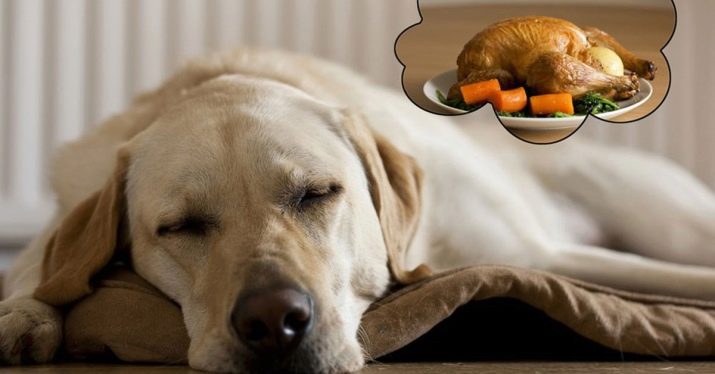
Reviews
Before buying a pet, it is recommended to study the reviews of the breed that you plan to have.
It is better to buy purebred animals in professional nurseries, where breeders will be able to provide documents on the birth, pedigree and vaccinations of the puppy.
If we summarize the owners' reviews about dogs of all types, then the owners are rarely disappointed in their choice, if it was initially conscious. The difficulties of keeping are usually faced only by those people who could not sensibly assess their strengths before buying and did not cope with raising a pet.
See the BBC documentary on dogs below.






































